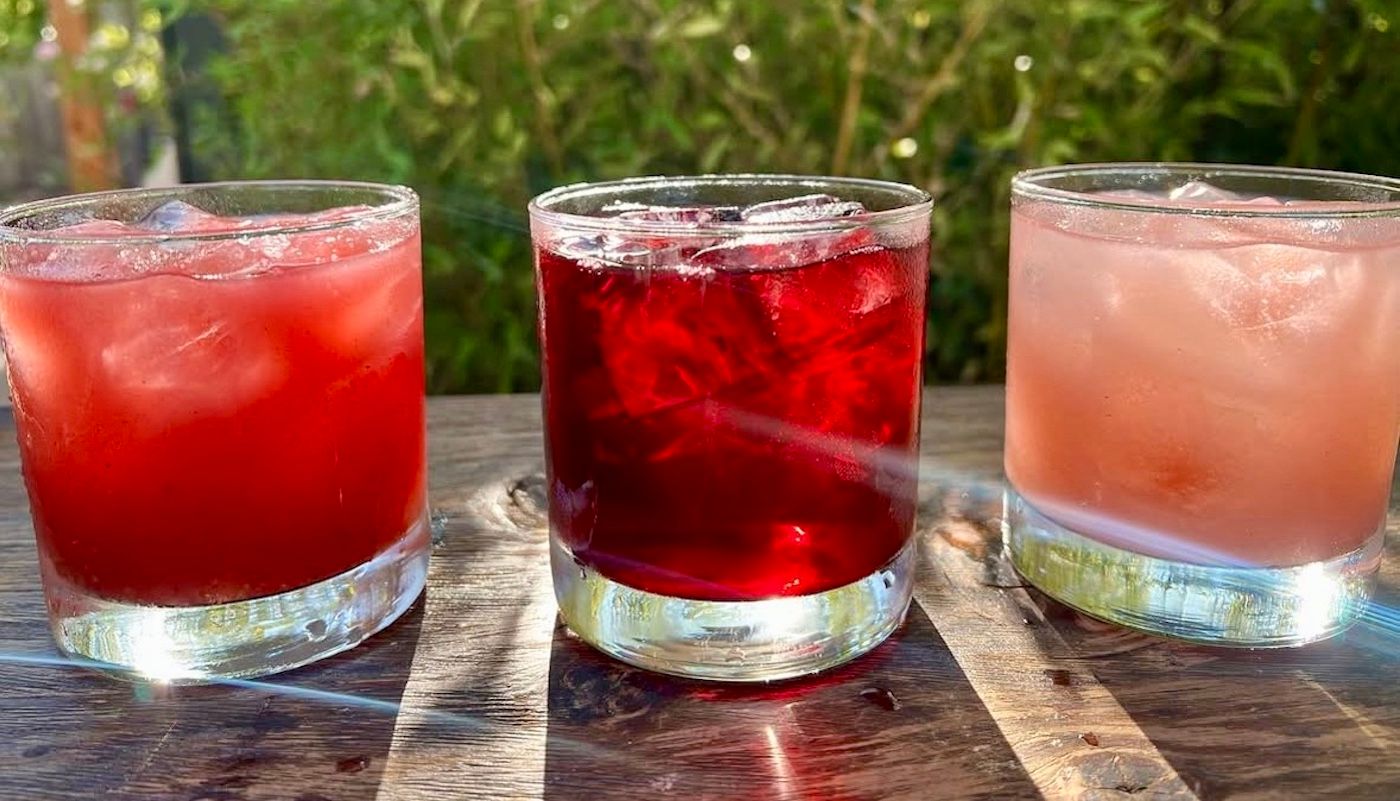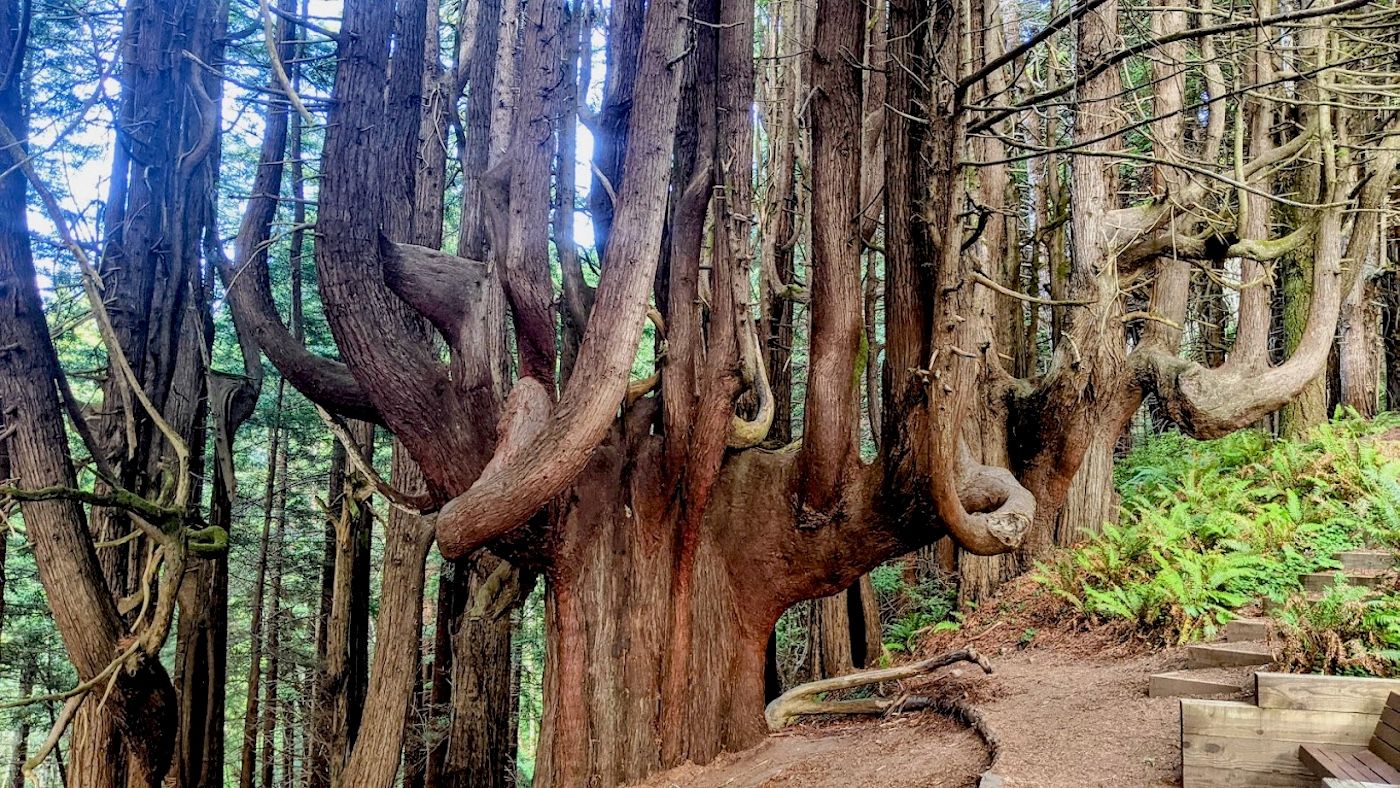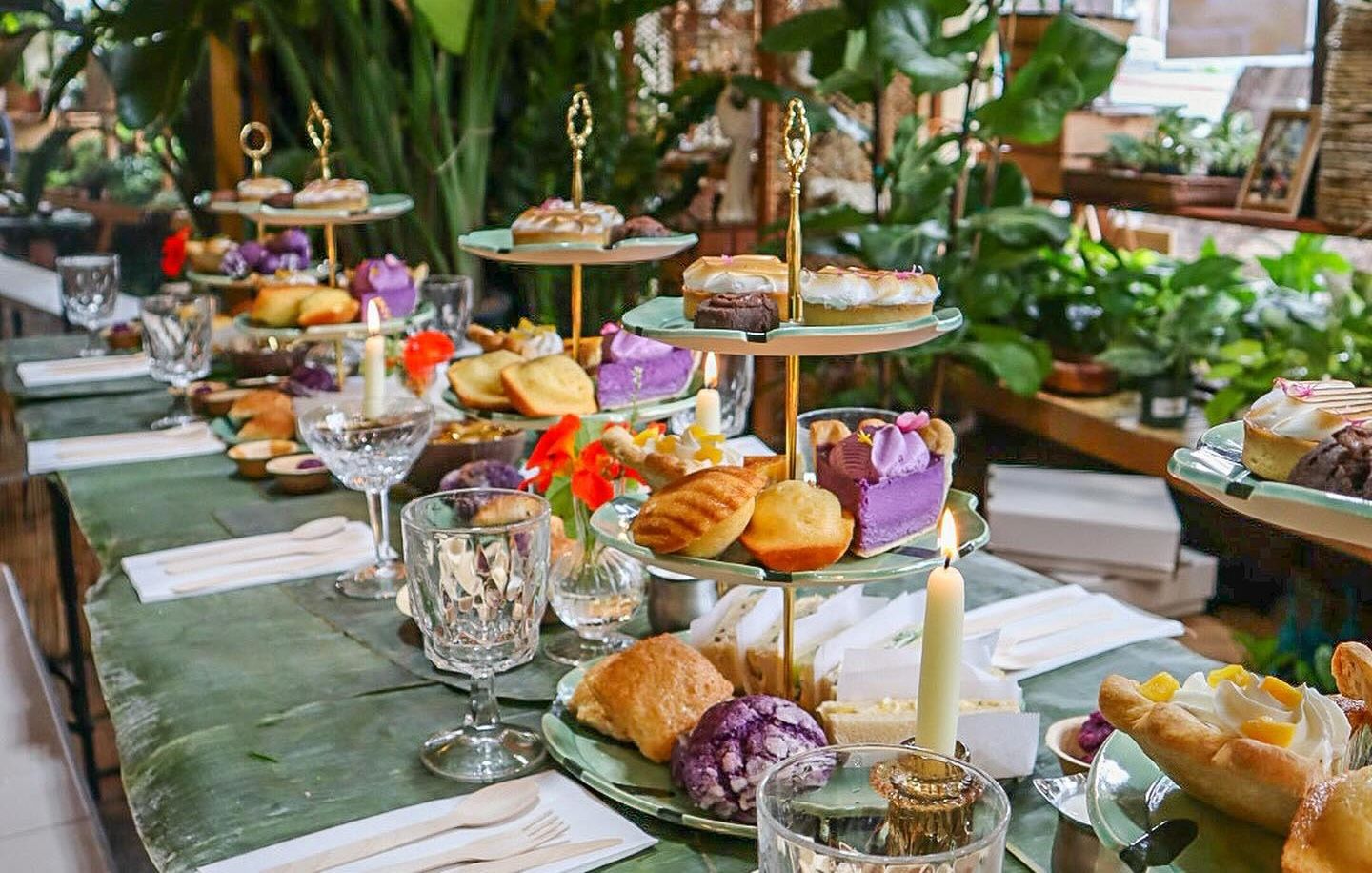In this week’s Field Notes: Financial literacy for youth; Filipino tea and an all-Filipino band; Latino history; mezcal traditions; ceramic and wood; sculptural trees; Bay Area haunts; a mountain lion’s journey; and Santa Cruz’s new upscale hotel and spa.
Tea and kinship
What began as a friend’s dream has taken root in something larger — a Kamayan Tea Party in Berkeley where cucumber sandwiches sit beside ensaymada and haupia, and where conversation bridges cultures as easily as flavors do.
Hosted by Pamana Plantas, the event folds Filipino hospitality into the city’s slow afternoons, offering both nourishment and solidarity. Each tea service draws from small local vendors and reinvests in the community they share. — Geronimo Carlo Ramos III
Spirit of the land
At Berkeley’s Mercado 925, owner Stephanie Romo Flores treats mezcal as a link between land and lineage — each bottle tracing back to the families and fields that made it. The bar glows with that spirit of connection, where Mexican tradition meets Bay Area craft.
 Mercado 925/Instagram
Mercado 925/Instagram
This season’s Marigold Smoky Margarita carries floral heat and a soft ember of mezcal, offered through Día de los Muertos as a toast to both the living and the remembered. — San Francisco Bay Times
Echoes in the West
Inside the Berkeley Historical Society, the city’s Latino stories take shape in photographs, banners, and hand-me-down memories. The new exhibit traces more than a century of Chicano, Mexican, and Latinx life — from early factory workers and student walkouts to community schools and car clubs.
Curators and elders spent months weaving together the threads of daily life, activism, and family memory into a single narrative. Berkeley’s Latino Community: A Story of Pride and Resilience, 1900–2025 runs through March 21 at the Berkeley Historical Society and Museum. — Berkeleyside
Moonlit repair
Richmond artist Em Kettner reimagines Cyrano de Bergerac through small ceramic and textile sculptures that explore love, self-image, and care. Figures lean, whisper, and embrace across lattices of woven thread and carved wood, each scene revealing both humor and fragility.
 Em Kettner’s ‘Moon Wooing’/Rebecca Camacho Presents
Em Kettner’s ‘Moon Wooing’/Rebecca Camacho Presents
Her detailed craftsmanship — porcelain tiles, silk threads, oil-sealed walnut — gives intimacy to the story’s familiar ache. Cyrano is on view through November 1 at Rebecca Camacho Presents in San Francisco. — KQED Arts
Season of echoes
Fog and folklore drift together this month, from haunted ships in Alameda to hillside burrows on Mount Diablo. The East Bay Vivarium in Berkeley hums with life — snakes, lizards, and the kind of creatures that make you both recoil and lean closer.
In the evenings, bats spiral above Del Valle and Novato, while the Claremont Hotel hosts haunted tours through its century-old corridors. Out at Sutro Baths and the Cypress Tree Tunnel in Point Reyes, twilight sharpens the edges of things — a reminder that in October, the Bay’s quiet places tell the loudest stories. — KQED News
Sunrise over La Bahia
Santa Cruz’s historic La Bahia has reopened as a full-scale hotel and spa after decades as rundown apartments. The Spanish-style building, with its bell tower, courtyards, and balconies, now houses 155 rooms with ocean-inspired décor, curated art, and local treats in the minibar.
Guests can take yoga on the rooftop, relax at the pool and spa, or enjoy Pacific Rim cuisine at High Tide and Low Tide restaurants. Event spaces and ocean views make it a destination for both visitors and locals. The hotel opened last month, steps from Main Beach. — 7 x 7
Wind-carved cathedral
Along California’s remote Lost Coast, a rare forest twists against the wind. The candelabra redwoods — sprawling, many-limbed giants — grew this way over centuries of coastal battering, reshaping themselves each time they broke. Their tangled forms stand like natural sculptures, spared from logging by their own strange geometry.
 Chef Rich/Google Maps
Chef Rich/Google Maps
The Save the Redwoods League now protects them within Shady Dell, where the 2.3-mile Peter Douglas Trail leads through mist and silence to a viewing platform above their roots. Reaching the grove requires a four-wheel drive and a long, bumpy road — fitting for trees that never took the straight path either. — Secret San Francisco
The path of one
When a young mountain lion called P-36 roamed from Sonoma to the Marin coast, crossing freeways and rivers in search of a home, Fairfax filmmaker Amelie Bluestone followed his trail — not in real time, but through story. Her short documentary, The Path of Puma-36, retraces his 1,400-mile journey and the questions it raises about coexistence in a shrinking wilderness.
Through interviews with ranchers and ecologists, Bluestone illuminates the fragile balance between survival and fear, myth and fact. The film screens Saturday at San Francisco’s 4 Star Theater as part of the Green Film Festival, and streams online through October 30. — Marin Independent Journal
Heartbeat and myth
From her home studio in Solano County, East Bay rapper Ruby Ibarra layers heritage, rhythm, and her daughter’s heartbeat into new work. After winning NPR’s Tiny Desk Contest with “Bakunawa” — a song named for a mythical dragon from the Philippines — Ibarra and her all-Filipino band spent the summer on a ten-city tour.
The track’s blend of Bisaya spoken word and ancestral imagery mirrors her broader mission: building a creative home for Filipino American artists through her label, Bolo Music Group. New music arrives later this year, shaped by kinship, language, and the long echoes of migration. — NBC Bay Area
Early returns
At Franklin Elementary in Oakland, a former stockbroker named Val Chapman is turning financial literacy into a hands-on adventure for fourth and fifth graders. Through her nonprofit, Financial Literacy for Kid$, students build mock portfolios, run mini start-ups, and pitch ideas in their own “Tiger Tank.” Some even hire classmates and earn a weekly paycheck.
Chapman’s lessons — from saving and diversification to long-term investing — are already paying off: her students are opening real savings accounts and bringing those lessons home. She’s now working with the Oakland Public Education Fund to expand the program to every public elementary school in the city. — KPIX
Top Image: Pamanas Plants/Google Maps
Previously: SF Photobook Fair, Annie Sprinkle’s ‘Bazoombas,’ and Local Indigenous-Owned Businesses

